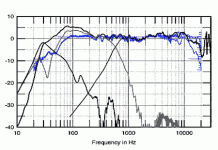The idea of "alignments" is an historical artifact. In the day, if you were lucky, you had a (physically big) adding machine, but often calculations were done with paper & pencil. If was convienient & much labour saving to use electrical analogs were someone else had already done the heavy lifting.
Today with computer software, there is a continuum of tunings, so no such thing as misalignment. That doesn't stop someone from a "bad" alignment.
dave
Today with computer software, there is a continuum of tunings, so no such thing as misalignment. That doesn't stop someone from a "bad" alignment.
dave
40 years passed - no change. Any questions someone ?
Nope.
That doesn't stop someone from a "bad" alignment.
Hey, you must be talking about my speakers. You know, the ones that sound good to me?
The idea of "alignments" is an historical artifact. In the day, if you were lucky, you had a (physically big) adding machine, but often calculations were done with paper & pencil. If was convienient & much labour saving to use electrical analogs were someone else had already done the heavy lifting.
Today with computer software, there is a continuum of tunings, so no such thing as misalignment. That doesn't stop someone from a "bad" alignment.
dave
That's well put. As for biasing the alignment to appeal to the taste of the buyer, that's just marketing.
40 years passed - no change. Any questions someone ?
Yes, what do you mean?
Are you saying that speakers have not changed in 40 years?
That is not true. However, speakers are still the weak point in the system, in part because the room and the corresponding location is something beyond the control of the manufacture.
The room is getting more and more attention as something that should be treated as part of the system. The problem is that most people will not sacrifice layout and aesthetics for a better acoustical setup. That drives the industry into the next revolution in sound, the DSP processor and RTA (Real Time Analyzer).
Have a look at Behringer's DEQ2496. This was originally intended for the pro sound reinforcement market, but has found a new market segment in home audio. Bose does a similar thing with some of their systems.
As far as speakers go, a lot of ground has been covered in 40 years. Thiele/Small marked the beginning of that 40 years period and since then speaker design has moved from the dark ages of black magic to a quantifiable science.
During those 40 years trial and error has been replace by the scientific method and sound engineering principles and when you compare the products of the first part of that 40 years to today's products it will be clear to the listener that things have changes.
However, there still is a lot of ground to cover, which simple means that there should be plenty to keep all of us playing in the sandbox trying to discover better ways to reproduce sound.
40 years passed - no change. Any questions someone ?
No change? We've made tons of progress by going from this:
An externally hosted image should be here but it was not working when we last tested it.
To this:
An externally hosted image should be here but it was not working when we last tested it.
So what speakers are truely accurate so that people can use them as reference?
http://www.harman.com/EN-US/OurComp...ents/White Papers/LoudspeakersandRoomsPt2.pdf
No change? We've made tons of progress by going from this:
An externally hosted image should be here but it was not working when we last tested it.
To this:
An externally hosted image should be here but it was not working when we last tested it.
I think adding a lava lamp to that first picture would help serve your point better.
Are you saying that speakers have not changed in 40 years?
No that's not what he was saying. Pay attention man.
No change? We've made tons of progress
Snowballing not necessary, that's not what he meant. He was talking about tailoring the sound to the market.
Snowballing not necessary, that's not what he meant. He was talking about tailoring the sound to the market.
Of course. After all, the people have to want to buy it before you can sell it. Might as well market and sell them what they want.
That is something that goes back a little longer than 40 years. More like thousands of years!
There's nothing to say you have to follow the textbook alignments.
In fact none of mine do (even with BSC) and are tweaked to suit my taste, room and partnering equipment. Generally my ports are approximately 0.7 x the Fb calculated length with the raised tuning frequency to give a bump but does it? Read this.
Troelsgravesen vent tuning tests
Thank you very much for that link. Really opened my eyes, quite interesting info, especially the part on stuffing and flaring. Don't take everything WinISD tells you for truth!
Ok, I found proof that stereophile's measurements are not accurate representations. (Good job andrewj for mentioning this 4 pages ago)
SoundStage! has their measurements done by the National research council of Canada in an anechoic chamber. A list of measured speakers and other equipment:
Index of /measurements
Here's SoundStage's measurement of the Revel Concerta F12:
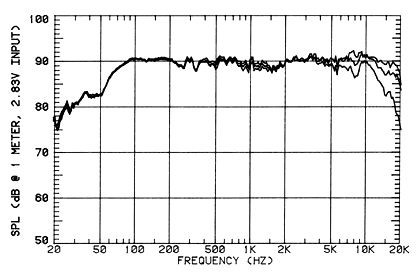
And Stereophile's measurement of the Revel Concerta F12:
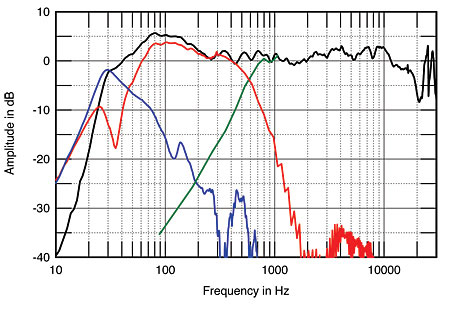
SoundStage's measurement of the Dynaudio Confidence C4:

And Stereophile's measurement of the Dynaudio Confidence C4:
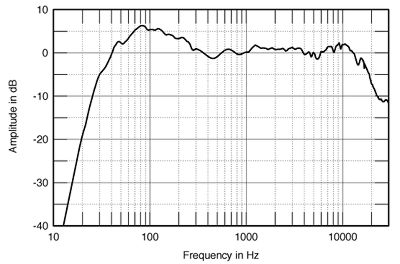
SoundStage's measurement of the Wilson Sophia:

And Stereophile's measurement of the Wilson Sophia:
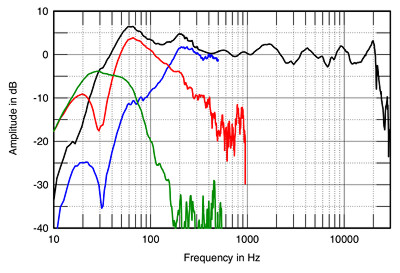
So it turns out these manufacturer's aren't all boosting the bass after all. Worth noting that JBL still likes to employ the "disco smile" in their consumer products:
SoundStage! Measurements - JBL L890 Loudspeakers (6/2006)
SoundStage! has their measurements done by the National research council of Canada in an anechoic chamber. A list of measured speakers and other equipment:
Index of /measurements
Here's SoundStage's measurement of the Revel Concerta F12:

And Stereophile's measurement of the Revel Concerta F12:

SoundStage's measurement of the Dynaudio Confidence C4:

And Stereophile's measurement of the Dynaudio Confidence C4:

SoundStage's measurement of the Wilson Sophia:

And Stereophile's measurement of the Wilson Sophia:

So it turns out these manufacturer's aren't all boosting the bass after all. Worth noting that JBL still likes to employ the "disco smile" in their consumer products:
SoundStage! Measurements - JBL L890 Loudspeakers (6/2006)
B&W still looks boomy among other problems:
SoundStage! Measurements - B&W CM1 Loudspeakers (5/2007)
SoundStage! Measurements - B&W CM1 Loudspeakers (5/2007)
Ok, I found proof that stereophile's measurements are not accurate representations.
Sorta, maybe. In the anechoic chamber there will be no room gain, there will be a full 6 dB loss because of bafflestep.
Nearfield it is as if the speaker is in a 2pi environment... you'd expect the measurement to bump up 6 dB.
Attached is a comp of the Revel, and we can see that is pretty much the case.
Real-room reality will be somewhere in-between, Where between depends on the room.
Still there are lotsa gotchas with the in-room measurement/splice job.
dave
Attachments
I thought the whole point of doing a nearfield/gated hybrid measurement was to eliminate the influence of the room on the measurement. That's why they call it quasi-anechoic, right?
I knew an engineer who worked for an audio company with an anechoic chamber. He said part of his job was to use whiteout on the FR plots to remove a low frequency bump caused by the chamber. So neither measurement is foolproof....
Anyway, here's the two graphs from the NHT Classic 3 overlayed, showing a smaller difference:
I knew an engineer who worked for an audio company with an anechoic chamber. He said part of his job was to use whiteout on the FR plots to remove a low frequency bump caused by the chamber. So neither measurement is foolproof....
Anyway, here's the two graphs from the NHT Classic 3 overlayed, showing a smaller difference:
An externally hosted image should be here but it was not working when we last tested it.
Last edited:
I thought the whole point of doing a nearfield/gated hybrid measurement was to eliminate the influence of the room on the measurement. That's why they call it quasi-anechoic, right?
The comparisons show how quasi they really are...
dave
- Status
- This old topic is closed. If you want to reopen this topic, contact a moderator using the "Report Post" button.
- Home
- Loudspeakers
- Multi-Way
- Intentional misalignment of vented enclosures: sacriledge?
